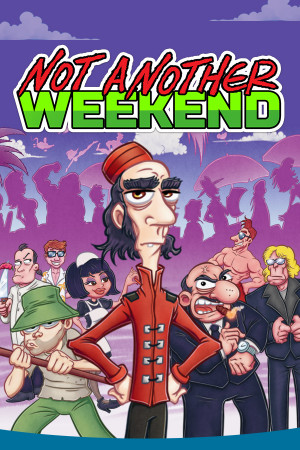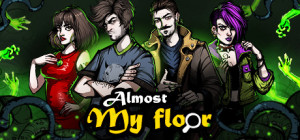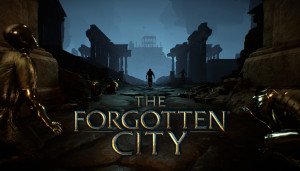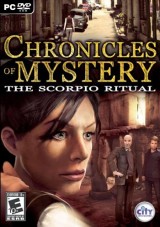Review for Døm Rusalok
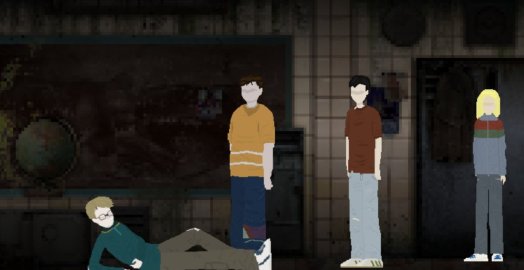
They say our teenage years are the best of our lives, and though I didn’t believe it then, I certainly understand the sentiment now. Døm Rusalok tells the story of a group of teenagers in an early post-Soviet Russia, beautifully contrasting the aimless wanderings of teen life against a horrifying Soviet secret. Though it is set in a place and time I know very little about, the story elicits a surprisingly strong kinship with its characters. The gameplay is a bit slow (literally and figuratively), and it ends in what I consider an abrupt but suitably Russian manner, but for those looking to vicariously relive a bit of their youth amidst a very cool and creepy horror backdrop, this side-scrolling adventure may be worth a look.
It’s 1996, and Zhenya is spending the summer vacation at his grandparent’s house, with the action opening in his room. Artefacts of the fall of the Soviet Union are everywhere, and the shift in Russian culture is made immediately evident by details like the Walkman in Zhenya’s possession and the poster of Stallone's Cobra on his wall. Plenty of other cultural details are scattered throughout the room as well, like sugared cranberries (of which Zhenya clearly states his disdain). This aspect of Zhenya’s heritage was completely foreign to me, but the brief explanations and comments he drops when examining these items gave me enough context to help put me in his shoes right from the get-go.
After being told by his grandmother to go outside and play, Zhenya begins an aimless stroll to nowhere, meeting the other kids on the block. A couple of older boys play soccer in the street, a younger girl smokes a cigarette near an abandoned shed, and two boys Zhenya’s age build a fort (or halabooda) in an alleyway. After making friends by exchanging items and gossip with the other kids, eventually you all begin a game of hide-and-seek. While playing you discover an abandoned house, the site of an urban legend involving a missing child, and the group decides to venture inside. It is the forces behind this legend that move the game into pure horror territory, as you’re pulled deeper into the mystery over the course of several days.
After visiting the house, the group begins to experience strange paranormal occurrences. At home the next day, for example, one of Lyosha’s video games seemingly malfunctions, spitting a barrage of strange imagery onto his TV screen. Other disturbances aren’t nearly so benign, however, as several children are taken prisoner by an unknown entity and held captive in an underground facility. As they struggle to find out exactly what landed them in this rundown complex of abandoned subway platforms, sewer service offices, and laboratories, they must also try to survive the mysterious hostile forces roaming the tunnels. Rifling through scattered documents turns up clues about the supernatural events occurring, though don’t expect the mystery to be outright solved. It is hinted that the urban legend is rooted in an old Soviet experiment that went wrong, but the notes are written with enough ambiguity, and the ending so abrupt, that you’ll probably be mulling over it all for some time after.
Though the story focuses primarily on Zhenya, you’ll spend a decent amount of time getting to play as other kids as well. Before they all end up in the subterranean complex, you’ll have the opportunity to go through their homework, journals, and rooms, uncovering a bit more about their personalities and pasts. Lyosha, one of the boys building the halabooda, reveals weight insecurity and body image issues in his writings, and usually spends most of his time inside playing video games. Beata, whom Zhenya met smoking by the shed, lives in a communal flat, having experienced trouble at home with her family. The dialogue, despite a few translation errors (which kind of suit the game as a reminder that the characters aren’t speaking fluent English), is spot on and reads exactly the way teenagers talk to one another (at least insofar as I remember). Playable flashbacks further develop the characters, and though the game isn’t very long, it’s enough to get a sense of who these kids are and why they act the way they do when under pressure.
With its linearity and heavy use of dialog, Døm Rusalok lands somewhere between visual novel and point-and-click puzzle game. The mouse is used to interact with hotspots in the environment, while movement is controlled via the A and D keys, moving the current protagonist left and right. Gamepads are not supported, which isn’t surprising since manual typing input is required from time to time. With no run option available, movement is irritatingly slow no matter who you control, and the time spent walking between areas, backtracking to different objectives, becomes quite tiresome.
The smart cursor will change according to the object it’s hovered over, though sometimes in my playthrough it mixed up the indicators for exiting and picking up or investigating items, for example. The triggers always worked as intended when activated, but this glitch sometimes proved disorienting when trying to explore the environment. Some items go straight into your possession when clicked, appearing in your inventory at the bottom of the screen, nestled in the letterbox border beneath the play area, while others simply prompt a line or two of text commentary.
Sometimes an object selected will be magnified, filling the majority of the screen. Computers, for instance, spawn a primitive DOS-like interface, with navigation handled by typing commands like ‘menu,’ a number selection, or ‘exit.’ Documents are written in Russian, though an English translation will appear when hovering your cursor over the page. Other items may also be hidden in close-ups, requiring you to click about the image to reveal concealed information. Certain points of interaction prompt zoomed-in views as well, like a view of what’s on a microscope slide, with the E key used to back out of the screen. As the game gives no tutorial for controls, I panicked the first time I encountered such a screen, not sure how to close it and return to the main environment.
The puzzles are fairly straightforward, with collected items and clues almost always used in the immediate vicinity of where they were found. The game doesn’t overburden you with equipment, discarding used items automatically after their purpose has been fulfilled, making the deduction of what items go where a relatively obvious affair. Other puzzles involve examining documents for information related to key codes or passwords, or simply finding keys in order to access new areas of the environment. The settings aren’t very large, usually comprising only half a dozen rooms or so before moving on to an entirely new location.
Unfortunately, puzzle triggers are frustratingly inconsistent. A phone dial puzzle, for example, involves using the number pad to dial and the Enter key to finalize input. I dialed what I thought to be the correct number several times, yet nothing happened. After wracking my brain for the better part of ten minutes, trying every other option I could, I retried my initial guess a few more times until it finally triggered the solution, seemingly at random. I ran into a similar issue with a number lock, which also caused a delay as I wandered back and forth looking for additional clues before trying my original input again and only then being granted access to the next area.
The opening section where Zhenya wanders the block provides a tutorial of sorts, but it actually proves to be the hardest part of the game. It starts out innocently enough, but ultimately becomes a convoluted process of making a bomb. Why? Well, because Zhenya’s a teenager and blowing stuff up is fun. I had no idea I was supposed to do so, nor is my knowledge of chemistry at the level where I even knew that I could make a bomb, but after getting stuck for several minutes, I resorted to the tried-and-true strategy of randomly combining everything in my inventory until something worked. The ramifications of the eventual explosion do move the story forward, and your goals are made a bit clearer from that point on, but it’s an unfortunate choice to start the game with a scenario that feels arbitrarily difficult to wade through.
Soon after, Zhenya has to ride his bicycle to the library to get books from an assigned reading list. When interacting with the bike a map screen appears, allowing you to travel between Zhenya’s grandparent's home and the library once certain criteria are met. Later, after his bike is stolen, another travel option becomes available for Zhenya and Masha, but after this the map screen is never used again. The locations visited in the first part of the game are all what you’d expect of a typical teenager’s stomping grounds during summer vacation. Though the various protagonists seem to be fairly stable financially, the overall state of the city is one of decay and disorganization. Garbage lines the streets, graffiti covers buildings, and the constant threat of everyday dangers like gangs and packs of dogs keeps the children on edge. Døm Rusalok paints a disturbingly vivid portrait of 1990s Russia, and while I can’t vouch for its authenticity, I can attest to the grave feelings it communicates through architectural ruin and social disorder. Things are even worse underground, with clusters of a throbbing flesh-like substance seen from time to time, and the shadowy outlines of bigger, unknown life forms occasionally teased.
Døm Rusalok utilizes pixel art backgrounds, sometimes spruced up with a select few animated CG renders. The backdrops are left intentionally hazy, with points of interaction and relevant items made slightly clearer and highlighted when moused over. That’s not to say you won’t have to stop and scour from time to time, however. It’s not a punishing pixel hunt but you will have to take your time in searching, making sure to hover your cursor over every drawer, shelf, and box to see if they can be interacted with. Some hotspots are just for show, including numerous books related to Russian history and popular culture, which was a nice touch for geographical outsiders like me. They even threw me off the solution to a few puzzles (in a good way) by having me overthink certain visual media or sentence composition in documents that were ultimately just for flavour.
The character models are interesting, being faceless and devoid of detail, looking more like paper cut-outs than fully integrated sprites. It’s charming in its own way, but some may be turned off by the (intentionally) cheap look. This contrast between the characters and backdrops somewhat echoes the look of the early survival horror games like Alone in the Dark, albeit flattened to a 2D plane. Impressive use of shadows gives the screens some depth, and effects like fog and light beams further the atmosphere. In some flashback sequences, the game overlays a CRT fisheye sort of filter mimicking old tube TVs, which does a great job of heightening the suspense as you watch your character from a detached viewpoint. Curiously, there is quite a bit of screen tearing when walking slowly back and forth through the environments. This is by no means a demanding game in terms of system requirements, and where this unfortunate hiccup stems from is a mystery.
Typing sounds accompany the text dialog as it scrolls across the screen, and pop music of the era occasionally sneaks its way in during cinematics, but for the most part Døm Rusalok is a quiet game. Light atmospheric ambience from the streets can sometimes be heard aboveground, while the unsettling moaning of steel fills the void as you wander beneath them. Otherwise the scenes are so muted that the occasional sudden loud noise like computer bleeps as I scrolled through data made me jump out of my seat more than once. There is no voice acting, but considering the faceless character models, this ends up suiting the game.
There are several bonus items and scenarios you can encounter throughout, including a hidden playable game of Space Invaders. I missed a few of the fifteen Steam achievements in my playthrough, and while I’m not exactly ready to go back and find them right away, it’s a welcome inclusion for those who want to experience everything the game has to offer.
The game uses an auto-save feature and the distance between checkpoints is often quite long, ranging twenty to forty minutes on average. Though I did get stumped a few times, I was never held down for long; still, it would have been nice to have the option to save manually, or just have more frequent checkpoints. Retracing your steps won’t take long once you know what to do, though wading through the dialogue and puzzles again is needlessly annoying. There is no threat of death, however, taking away any real sense of urgency and leaving the focus more on exploration in order to uncover as much about the story as you can.
Døm Rusalok’s charming juxtaposition of innocent teenage antics against the deadly aftermath of a Soviet experiment works quite well despite a few gameplay and performance issues. Indie developer Yakov Butuzoff claims that the story follows in the tradition of Stephen King and R.L. Stine, and though the end result isn’t exactly Stand By Me, it successfully transplants the familiar American coming-of-age horror formula to a very particular Russian setting to give it a distinctive feel. It’s not too user-friendly for what is essentially a traditional adventure. However, the creep factor is nicely established through both the old-school visuals and reserved sound design, and strong connections are forged with the game’s characters, such that you’ll genuinely care about their fates. It doesn't exactly wrap up neatly, but rather than feeling unsatisfying, this ambiguity just means you’ll likely still be pondering the outcome and loose threads long after the fact.












